Navigating Medicaid Funding Cuts: Finding Hidden Opportunities to Preserve Margins

7 Apr 2025
I read an interesting article in Fierce Healthcare on the Fitch Ratings and possible Medicaid cuts which prompted me to write this short post. In today's uncertain healthcare landscape, the looming threat of Medicaid funding cuts has many insurers concerned about maintaining financial stability. As government reimbursements potentially tighten, the pressure to optimize every dollar while still delivering quality care has never been greater.
𝗧𝗵𝗲 𝗖𝗵𝗮𝗹𝗹𝗲𝗻𝗴𝗲 𝗪𝗲'𝗿𝗲 𝗔𝗹𝗹 𝗙𝗮𝗰𝗶𝗻𝗴
One area that consistently surfaces in our conversations with health plans is the significant amount of spend going toward claims that lack proper documentation, contain coding errors, or include services that shouldn't have been reimbursed. While this has always been important, the potential for funding cuts makes addressing these issues absolutely critical. Most health plans already have payment integrity vendors in place, which might suggest that all possible savings have been captured. But our experience shows there's a substantial opportunity that's often overlooked.
𝗧𝗵𝗲 𝗕𝗹𝗶𝗻𝗱 𝗦𝗽𝗼𝘁 𝗶𝗻 𝗣𝗮𝘆𝗺𝗲𝗻𝘁 𝗜𝗻𝘁𝗲𝗴𝗿𝗶𝘁𝘆
What we've discovered is that traditional payment integrity approaches tend to focus predominantly on high-dollar claims – and understandably so. The ROI is clear and immediate. But here's what's interesting: those lower-value claims (typically under $25,000) actually make up about 75% of a health plan's total claim value. The sheer volume of these transactions creates a perfect environment for financial leakage. Even a small error rate across thousands of claims can translate into millions in unnecessary payments annually – a margin reduction most insurers simply can't afford in today's environment.
𝗪𝗵𝘆 𝗧𝗿𝗮𝗱𝗶𝘁𝗶𝗼𝗻𝗮𝗹 𝗔𝗽𝗽𝗿𝗼𝗮𝗰𝗵𝗲𝘀 𝗠𝗶𝘀𝘀 𝘁𝗵𝗲 𝗠𝗮𝗿𝗸
Through our work with numerous health plans, we've identified several reasons why these opportunities get missed: First, there's the natural gravitation toward high-dollar inpatient claims, while those smaller outpatient, professional, and specialty claims – often containing errors like upcoding or undocumented services – receive less scrutiny. Second, the industry's reliance on rule-based automation works well for obvious issues but struggles with more nuanced billing patterns or those small discrepancies that compound over time. Finally, many health plans assume their current vendor stack has everything covered, when in reality, most vendors specialize in specific claim categories rather than taking a comprehensive approach.
𝗔 𝗗𝗶𝗳𝗳𝗲𝗿𝗲𝗻𝘁 𝗣𝗲𝗿𝘀𝗽𝗲𝗰𝘁𝗶𝘃𝗲 𝗼𝗻 𝗙𝗶𝗻𝗱𝗶𝗻𝗴 𝗦𝗮𝘃𝗶𝗻𝗴𝘀
At Nokomis Health, we've developed an approach that examines all professional and facility claims with equal rigor, regardless of dollar value. Our ClaimWise™ technology helps identify patterns and anomalies that typically slip through traditional automated checks.
What makes this approach particularly effective is:
-A systematic review of every claim, not just the high-value ones
-Pattern recognition that spots recurring issues in provider billing practices
-A focus on prevention rather than post-payment recovery efforts
𝗣𝗿𝗲𝘀𝗲𝗿𝘃𝗶𝗻𝗴 𝗠𝗮𝗿𝗴𝗶𝗻𝘀 𝗶𝗻 𝗖𝗵𝗮𝗹𝗹𝗲𝗻𝗴𝗶𝗻𝗴 𝗧𝗶𝗺𝗲𝘀
As potential Medicaid funding cuts approach, finding these hidden savings opportunities becomes even more crucial. We consistently see substantial untapped savings in those lower-value claims that other payment integrity solutions simply miss.
For health plans looking to weather potential funding reductions without compromising member services, taking a fresh look at your payment integrity approach might reveal significant opportunities you didn't realize existed.
I'd be happy to discuss what we're seeing across the industry and how other insurers are preparing for these challenges. Sometimes the most impactful financial opportunities are hiding in plain sight.
Published by Author:
Chris Wilson, CRO, Nokomis Health
See source article here that inspired my post. https://loom.ly/tssumq8 by Paige Minemyer on March 3rd 2025



